by Dot Cannon
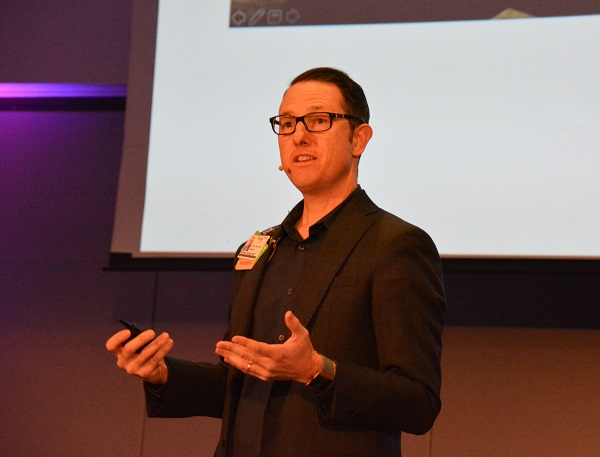
“What role can XR play in the aftermath of the pandemic?” asked Dr. Brennan Spiegel.
Seven o’clock had arrived, on Thursday morning. Cedars-Sinai’s fifth annual Virtual Medicine conference was just beginning. Attendees were signing in from all over the world for this all-virtual two-day symposium, covering numerous aspects of the use of virtual reality in the medical profession.
In all, according to Dr. Spiegel, there were 325 registrants from thirteen countries and four different continents.
And Dr. Spiegel, who is both Cedars-Sinai’s Director of Health Services Research and the founder of this groundbreaking conference, was starting off the two-day event. In his opening presentation, “MXR in the Era of COVID-19”, he explored numerous ways that medical professionals have used virtual reality to deal with the pandemic.
“Virtual reality is a platform that can profoundly change our view of ourselves and the world around us,” Dr. Spiegel said.
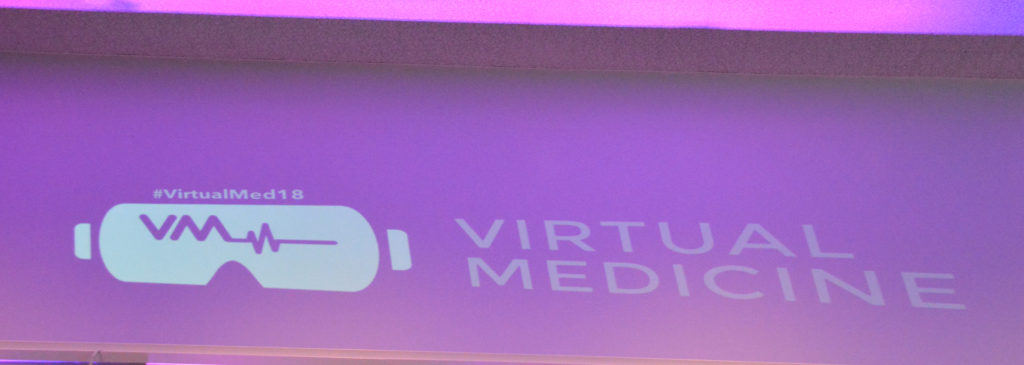
A myriad of applications
Exploring the multiple waves of the pandemic, and its effect on the medical profession, Dr. Spiegel illustrated numerous ways medical VR had solved some of the problems COVID had presented.
Among the uses he cited: a PTSD therapy experience, from a research study in the Netherlands. This application allowed patients who’d been critically ill with COVID to “debrief” on what they’d been through in an intensive care unit.
Dr. Spiegel said the patients who’d been treated with medical VR showed significant reduction in anxiety and depression.
A second use involved clinician training and well-being at Cedars-Sinai.
“Our trainees, our students, how could they continue to stay sharp (during lockdown)?” Dr. Spiegel asked.
The answer: VR simulations that allowed them to learn how to interact with patients. VR applications permitted trainees to practice these skills, such as having difficult conversations with patients, “over and over again.”
In addition, Dr. Spiegel said, elective procedures decreased dramatically due to the pandemic. Surgeons were able to keep their skills sharp by practicing these surgeries in a virtual environment.
Meanwhile, de-stressing, for frontline healthcare workers, was another capability.
Dr. Spiegel showed a slide of green, tranquil environments in a VR simulation.
Measuring the workers’ stress levels, before and after experiencing the green spaces in VR, showed a reduction in the level of stress among frontline healthcare workers who had received this particular VR program.
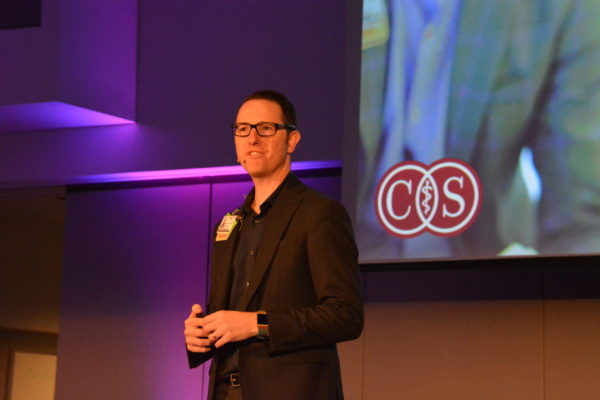
Awestruck by innovation–and imagination
Early in his presentation, Dr. Spiegel had alluded to one crucial element in the use of medical VR.
“Awe is so important,” he commented.
And that “awe factor” would be present for the entire day.
As always, one post can’t do justice to the inspiration, creativity and heart that shone throughout vMed22’s Day One presentations.
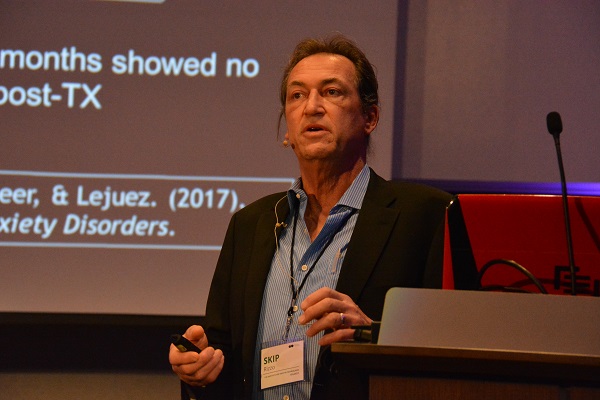
“Right there is a golden moment,” commented USC Director of Medical Virtual Reality and research professor Dr. Albert “Skip” Rizzo.
In his presentation, “Is MXR Ready For Primetime in 2022?” he explored five core processes of medical VR: expose, distract, measure, motivate and engage.
The “golden moment” to which he was referring involved most of those.
Dr. Rizzo indicated a slide in which a patient was using a 1999 occupational-therapy application. Wearing a VR headset, the man had a delighted expression on his face while reaching his arms into the air. The slide showed what he was seeing: colorful balloons in an animated world
“Motivating people to engage in their occupational physical therapy in a way that they do more of it and they do it more intensely (is the goal),” Dr. Rizzo said. “At the same time we can measure performance.”
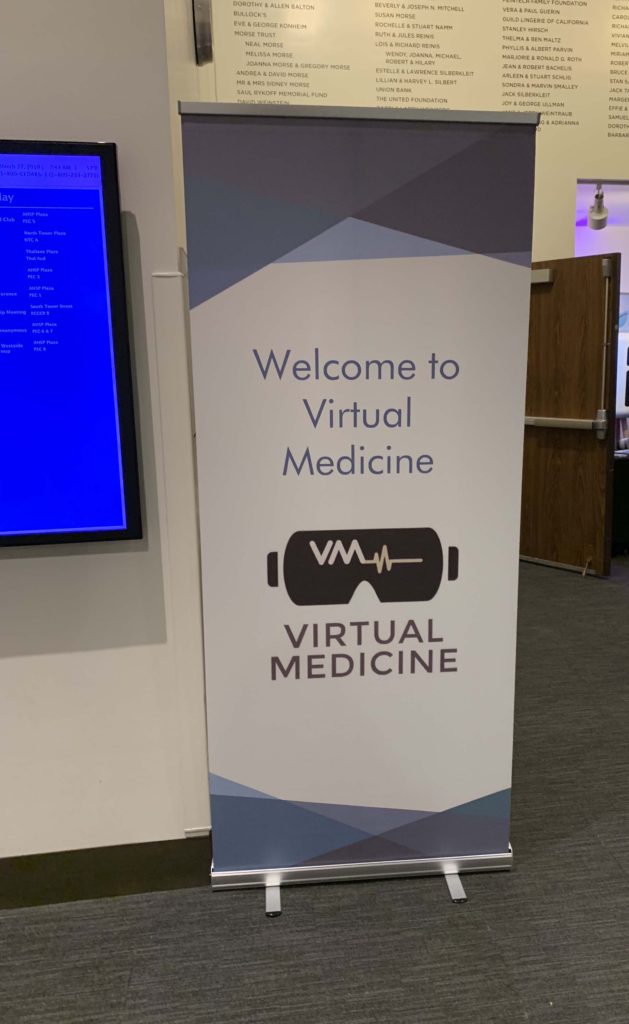
Through the Web, brightly
“I think the next ten years will make the last ten years look slow,” said futurist Dr. Daniel Kraft during his morning keynote address, “The Future of Health and Medicine: Where Can Technology Take Us?”
After a summary of this decade’s medical innovations, Dr. Kraft predicted what we might see in the field by 2032.
“I think in the next few years you’ll see (wearables that measure just about every aspect of physiology and behavior),” he said.
“And we’re going from wearables to ‘invisibles’, cameras in the environments that can pick up our heart rates, our blood pressure. Wi-fi can pick up the vital signs of multiple people in the same room, at the same time.”
Dr. Kraft projected a future where healthcare would be much more proactive and preventive, with possible crowdsourced databases to customize care to individual patients. And telemedicine, he said, would mean physicians would need not just a good “bedside manner”, but a good “webside manner”, as well.
At the close of Dr. Kraft’s opening keynote, much more was coming. Dr. Spiegel said that this fifth “Virtual Medicine” conference had 342 attendees, from four different continents and
And we recalled a question Dr. Spiegel had asked, at the start of the symposium.
“Are you awed yet?”
Absolutely–and it wasn’t even nine o’clock! Another full day and a half of presentations, including VR applications for empathy, mental health, obstetrics and much more, was yet to come.
